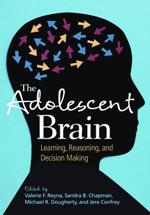By Karene Booker
Reprinted from Cornell Chronicle, February 20, 2012

Personality disorders could be more effectively diagnosed by identifying and targeting the disrupted neurobiological systems where the disorders originate, report Cornell researchers.
The way that these mental illnesses are now classified -- based on particular patterns of thought and behavior -- is misguided and has little hard evidence to support it, reports Cornell neuroscientist Richard Depue and his colleague in a special issue of the Journal of International Review of Psychiatry (23:3).
"The behavioral features used to diagnose personality disorders do not coalesce into coherent disorders in any research," says Depue, professor of human development in the College of Human Ecology, who co-authored the article with graduate student Yu Fu. "As currently defined, the different personality disorders have overlapping behavioral symptoms that also merge imperceptibly with normal behavior. A diagnosis should define a coherent behavioral pattern and predict a particular course, prognosis and treatment. No personality disorder diagnosis can do that."
Their findings fly in the face of current medical practice. Nearly one in 10 Americans suffers from a personality disorder, a group of disabling conditions characterized by serious, sometimes catastrophic, problems with relationships and work. Behavioral features can vary widely, from pervasive disregard for the law and the rights of others (antisocial personality disorder) to extreme mood instability (borderline personality disorder).
The researchers drew their conclusions by conducting a detailed review of the brain systems that underlie the major human personality traits.
Humans have about six major personality traits, each with its own neurobiological foundation that influences such behaviors as how anxious or impulsive we are, Depue notes. For example, the underlying systems and associated personality traits in their model include anxiety/stress-reactivity (thought to underlie neuroticism and negative emotionality) and neural constraint (thought to underlie conscientiousness), among others. The variety of behaviors associated with personality disorders arise from the influence of an individual's genetic make-up and environment on neurobiological functioning, they say.
In their multidimensional model, a person's personality traits can be plotted in three-dimensional space where the axes represent the underlying neurobehavioral systems. The patterns of behavior associated with personality disorders emerge from the interaction of extremely high or low values or levels of normal traits; such extremes lead to impaired interactions, they say.
"Our model links personality traits with the underlying neurobiology, which provides a better framework for understanding how and why personality disorders develop and how they can be treated," he says. "It allows us to better predict interventions, such as certain drugs and/or environmental interventions, which may be of benefit. We can also start thinking of treatments that modify multiple neurobiological variables, rather than just one or two."
And recent discoveries in neuroscience point to the important role environment plays, particularly during early childhood, in how genes are expressed, Depue says. "So, risks for personality disorders can be either magnified or reduced by the interaction of the individual's circumstances with their genetic make-up, in a process called epigenetics. We see evidence for this in personality disorders, which are much more prevalent in those who have suffered from a variety of childhood stresses and abuse."
Their theoretical analysis has implications for the criteria used for classifying personality disorders in the Diagnostic and Statistical Manual of Mental Disorders. It also contributes to a growing body of evidence that calls for a rethinking of the approach to classifying these illnesses, based on the underlying biochemical and neural processes that result in the symptoms.
The research was supported by a grant from the National Institute of Mental Health.
Karene Booker is an extension support specialist in the Department of Human Development.




 Videos are now online
Videos are now online 
